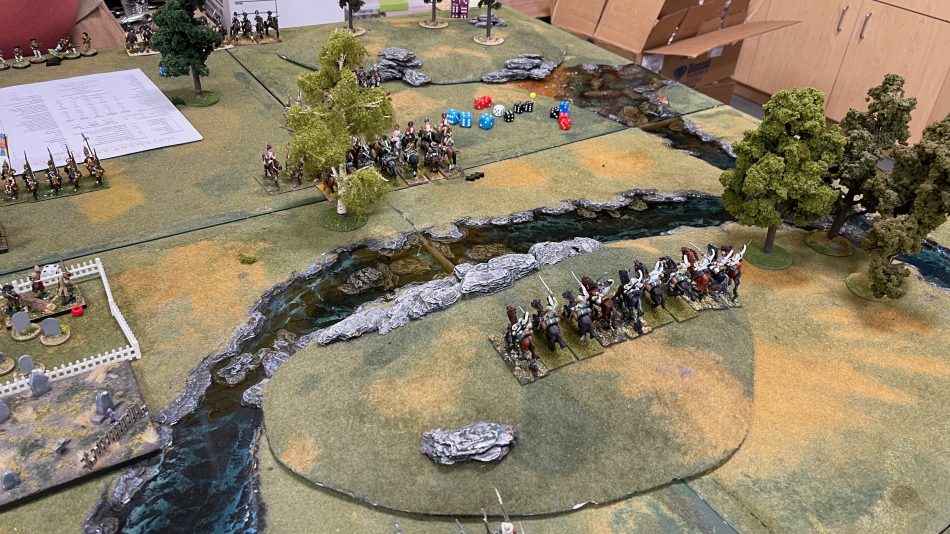Red Coats in the Wilderness – a review
By Tom Gall
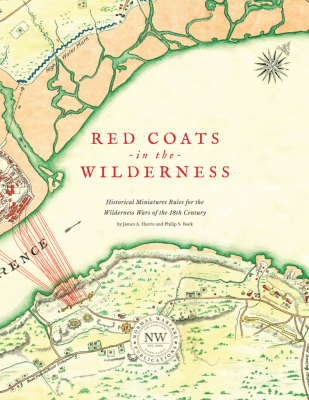
Looking for a 15mm-25mm ruleset for 18th Century warfare? has recently published their new rules Red Coats in the Wilderness. In this article, we’re going to have a look at the rules and what they have to offer.
If you are like me and enjoy horse and musket or have a deep curiosity about gaming out actions especially on the North American continent dating roughly between the Seven Years War to the War of 1812 this is a ruleset to look into. As written the rules cater to the French and Indian War, however as played Revolutionary War, and War of 1812 actions work very well with the system.
This time period and location demand a set of rules which models company and battalion level games which are different in scale as compared to the large-scale battles that were happening in Europe at the time. These smaller battles are what Red Coats in the Wilderness is tuned for.
Scale
The rules include charts for both 15mm and 25/28mm, and movement in inches or centimeters. A single figure represents 10 men and an artillery casting is representing one or two guns.
Each inch on the battlefield is approximately 15 yards and each turn roughly equals 10 minutes of modeled action.
Units
The rules contain guides for how figures should be mounted and how many figures you’ll need on a stand. A stand represents a company and these varied in size a fair amount, 40-100 men and then grouped up as a battalion, with 8-12 companies. Mix in irregulars like rangers, Native Americans, Cavalry unit, etc, the book guides you for what you need.
The quality of a battalion is rated A (best) to E (worst). Throughout the game, this will determine your modifiers and in some cases what the unit is able or not able to do. Class E infantry for instance can never charge.
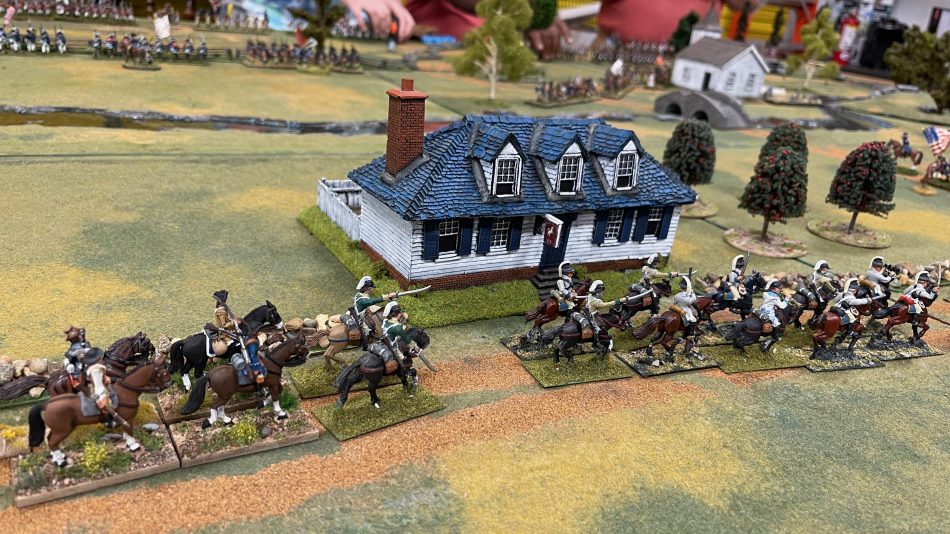
Game Mechanics
A game turn is divided into 10 phases, and a turn starts off with determining Initiative, simply what will be the order of movement, charges, and fire between the two sides. Your overall army commander and their rating factors into giving your side a bump up or down on winning the roll.
Charges are next, tally ho! Followed by movement, command and control, fire, morale, melee, artillery reloading, rally and recovery, and last army exhaustion to round out the turn.
Many phases have the side that won initiative go first, charges for instance, so the initiative roll at the top of the turn has meaning while small arms fire is conducted at the same time.
For a charge, those that declare a charge (or counter charge) must make a morale check, time to roll well, and show them what you’re made up. If the check is passed, you move the first 1/2 of your charge movement, next the unit being charged makes a morale check, if it passes it may fire defensive fire or react (such as refusing the flank), failure could be anything from going into disorder (and still be able to fire in defense) to an outright, pee your pants and run for the hills route.
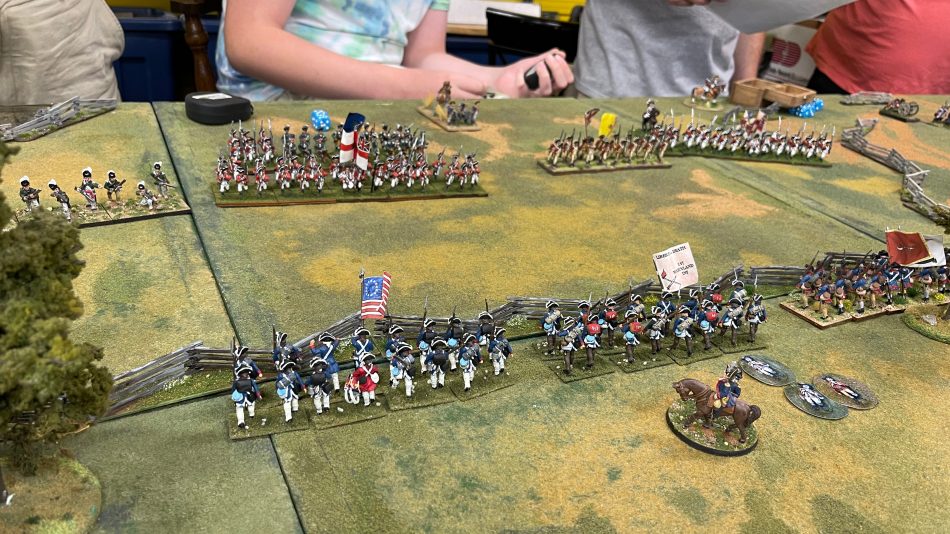
Movement is a function of “scale”, infantry in line can move 12″ (15mm) or 16″ (28mm). Obstacles, woods, roads, etc can serve to slow you down. Additionally what formation your unit is in makes a difference as far as its speed. Those in Skirmish order will cross through woods much easier then a unit in Line. As you’d expect for this time period formation matters!
After movement command and control is examined, are units in command or out? Those units that are out of command are subject to a penalty to all morale checks until the next command and control phase on the following turn. Depending on the commander this might be anywhere from 12″ to 18″ in 15mm scale.
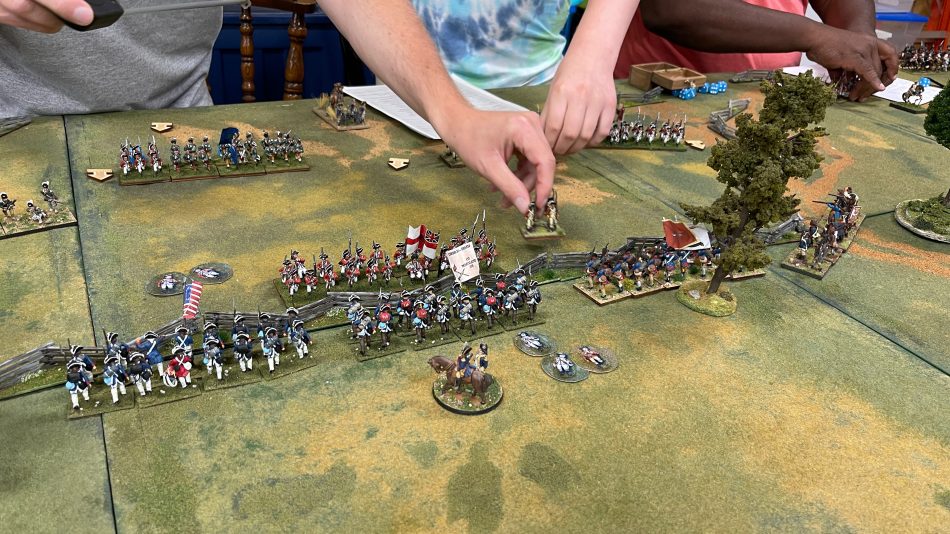
Fire as mentioned earlier is conducted at the same time with the exception of opportunity fire. Each stand with four or more figures contributes a strength factor. The number of strength factions determines how many D6 dice you will roll when the unit first, a maximum of up 4D6. Apply modifiers (there are 30 potential) and then divide the result by 5 which equals the number of figure casualties inflicted. If there are four figures on a stand, you’ll need to inflict four casualties before the stand is removed.
As fire Morale is checked for those units that suffered casualties. It is also checked at several other parts of the game such as during charges, wounded leader, and so on. A check is made when a unit reached a threshold of 25%, 50%, and 75% casualties. Class D and E units take a morale check whenever they take casualties. A player rolls 2D6 for the unit in question and apply one of the 30 modifiers to the roll which captures the various situations the unit might be in, a roll of 6 or higher passes.
Failure and the unit might go disordered (roll of a 5), broken (roll of a 4), or route (3 or less). Routing units that pass by friendlies will then cause them to immediately check their morale if the unit is the same or lower class than the routing unit. A natural 2 kicks you over to the Fate table which is immediately applied, it might be bad where the class of the unit drops to good where the class of the unit improves. Rolling low isn’t always bad.
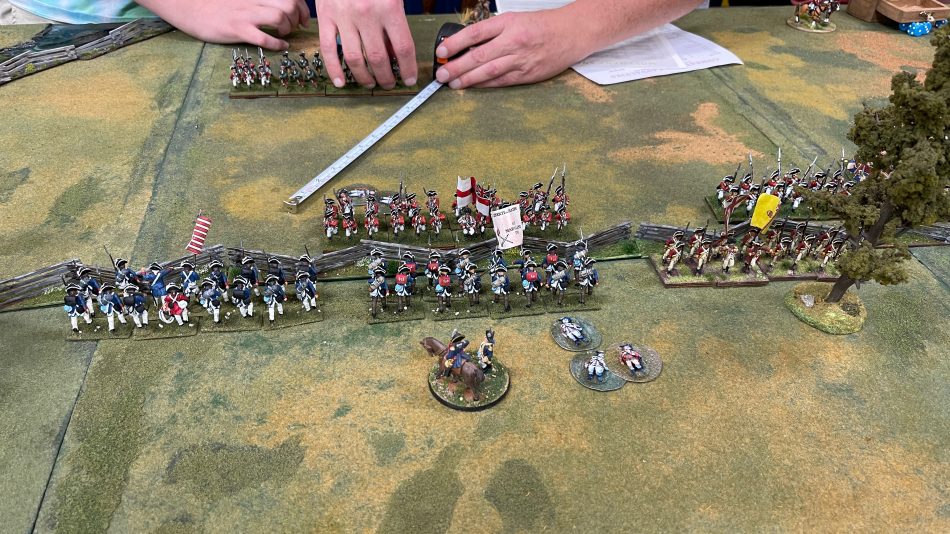
Melee can only occur for those units that charged into contact. As with firing the number of figures on a stand determine its strength factor which then determines if you get to roll between 2D6 to 4D6. Depending on if you are in march column or line or another formation will determine what all of your stands get to participate in the initial and following rounds of melee. Like firing, modifiers are added to the roll, divide by 5 and that is the number of casualties inflicted. The side that inflicts more causalities is the winner of the melee and the loser withdraws from the action, taking an immediate morale check. Best check the loser retires 1/4 to 1/2 of their movement backgrounds, worse case they route. If the melee is a tie, the units are locked in and the melee continues on the next turn.
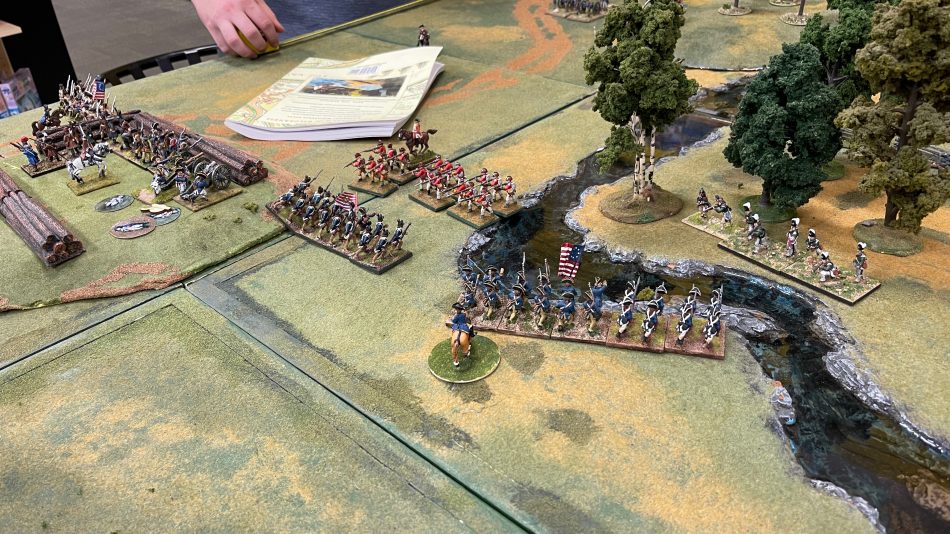
Thoughts
I’ve touched on the basic mechanics of the game. I’ve left off the important minutia that is typically covered in the rules, minutia which you would expect from a horse and musket game of the period.
Formation matters. If your men are in line, (attack or march) column, skirmish order it’ll affect what you can do at times in the rules as well as set your unit up for success or influence the odds against them.
Command matters. The presence of not only your general but their subordinates on the field to direct the units forward and keep them in order contributes to your success.
Quality matters. From the fellows just recently recruited from the bar, the top-of-the-line elite units, it’ll influence how well they shoot, how well they fight, and if they’ll stick around. Just asking them to get off a single volley can be asking a great deal depending on who they are.
Scale be it 15mm or 25/28mm is a choice left to you. The lure of big tables and pretty figures makes 25/28mm hardware glorious to the field, 15mm is more modest yet more likely to fit into a constrained space, easier on your wallet, and will paint faster.
There are a large number of modifiers in the game. In a world of simplification, you might feel like you’re swimming in them, thankfully they are logical and as you play a game or two, you’ll get to a point where you’ll race through them, still, I wish there were fewer. Cheat sheets are as simple as a front and back on a single sheet of paper so you won’t need to be consulting the rule book as you place game for modifiers.
There is no index in the rulebook. It is 112 pages long and for that length, an index is almost essential.
Summed up, I recommend the rules, they are fun, enjoyable and represent the period well. From the French and Indian War, to American War of Independence, to War of 1812, I find it a good set of rules and one that’ll I’ll turn to. Mine cost $30 and I picked it up from The Source Comics and Games in the Twin Cities here in Minnesota. The publisher points to Amazon.
